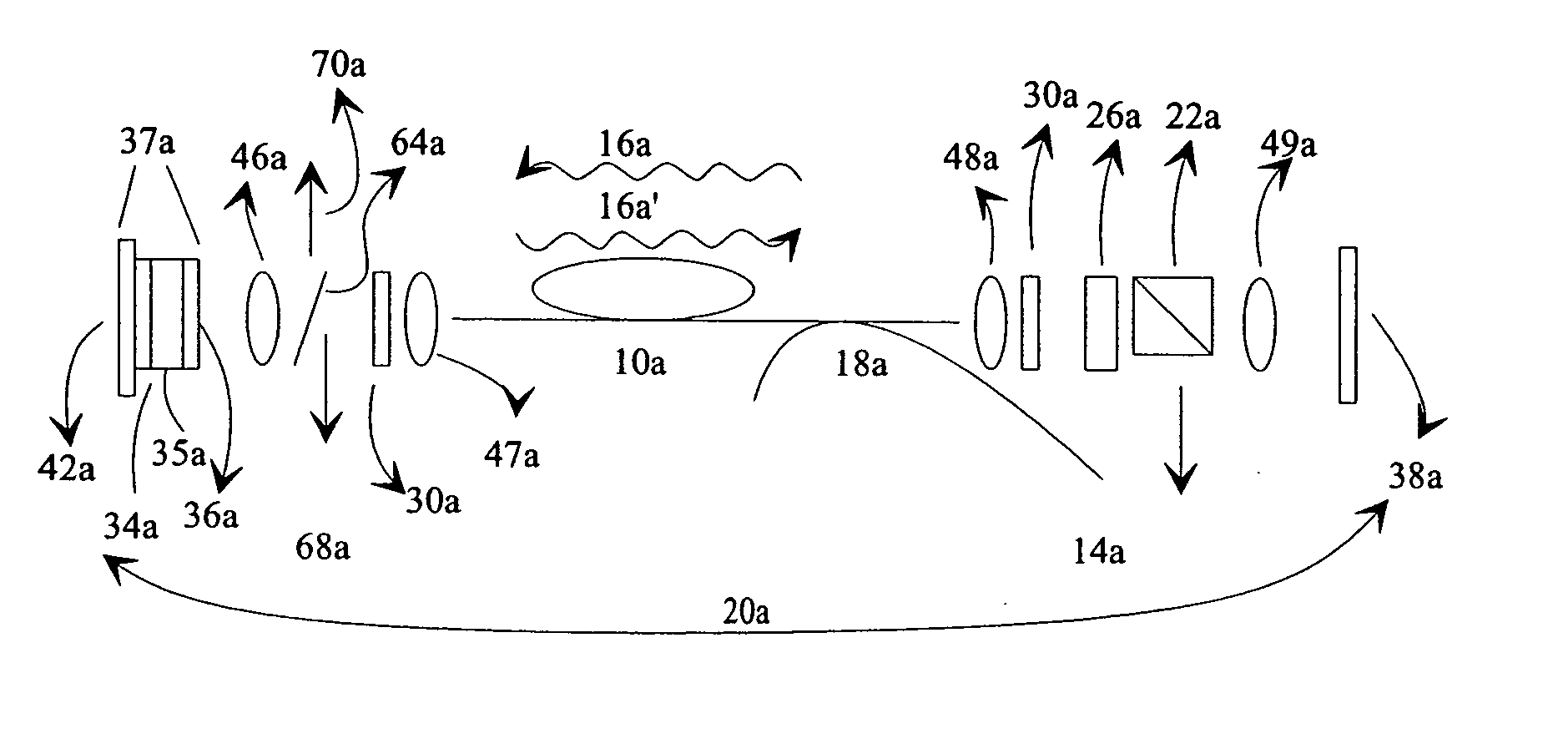Resonant fabry-perot semiconductor saturable absorbers and two photon absorption power limiters
a semiconductor and saturable absorber technology, applied in the field of modelocking, can solve the problems of intracavity power increase, gain saturation, and the magnitude of nonlinear loss qsub>0 /sub> of saturable absorbers, and achieve the effect of limiting pulse shortening, facilitating cw modelocking, and effectively suppressing qsml
- Summary
- Abstract
- Description
- Claims
- Application Information
AI Technical Summary
Benefits of technology
Problems solved by technology
Method used
Image
Examples
Embodiment Construction
[0043] In several preferred embodiments of this invention, self-starting cw mode-locking is obtained from Q-switched mode-locking. The cw mode-locking is induced by a near resonant Fabry-Perot saturable absorber (R-FPSA). An optical limiter such as a two photon absorber is preferably used in combination with the saturable absorber to self adjust the nonlinear loss to be within the stability region for cw mode-locking.
An Integrated Saturable Absorber (R-FPSA) / Optical Power Limiter
[0044] A preferred embodiment of the invention is shown in FIG. 6, which includes a fiber gain medium 10a such as a 1.5 m length of Er3+-doped optical amplifier fiber. The optical layout of this embodiment is similar in some respects to those disclosed in Assignee's co-pending U.S. application Ser. No. 09 / 040,252 filed Mar. 9, 1998 and entitled HIGH POWER, PASSIVELY MODELOCKED FIBER LASER, AND METHOD OF CONSTRUCTION, which is hereby incorporated by reference.
[0045] Pump light 14a (preferably from a laser...
PUM
| Property | Measurement | Unit |
|---|---|---|
| round trip cavity time | aaaaa | aaaaa |
| thickness | aaaaa | aaaaa |
| thickness | aaaaa | aaaaa |
Abstract
Description
Claims
Application Information
 Login to View More
Login to View More - R&D
- Intellectual Property
- Life Sciences
- Materials
- Tech Scout
- Unparalleled Data Quality
- Higher Quality Content
- 60% Fewer Hallucinations
Browse by: Latest US Patents, China's latest patents, Technical Efficacy Thesaurus, Application Domain, Technology Topic, Popular Technical Reports.
© 2025 PatSnap. All rights reserved.Legal|Privacy policy|Modern Slavery Act Transparency Statement|Sitemap|About US| Contact US: help@patsnap.com



